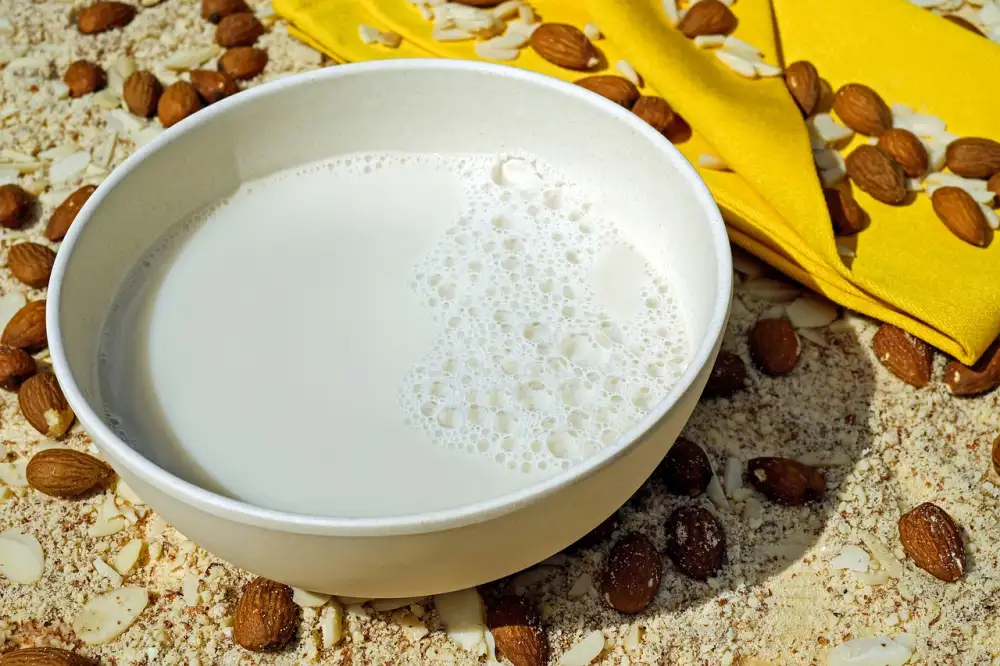Unveiling the Shelf Life Secrets: Does Almond Milk Go Bad? Find Out Now!

Almond milk has become increasingly popular as a dairy-free alternative for those seeking a healthier lifestyle. But have you ever wondered how long almond milk can last before it goes bad? Understanding its shelf life is crucial to ensure that you consume fresh and safe almond milk. In this article, we will delve into the factors affecting the shelf life of almond milk and provide you with proper storage tips to maximize its freshness. So let's uncover the secrets behind the shelf life of almond milk!
How Long Does Almond Milk Last?
Almond milk, a popular dairy alternative, is known for its creamy texture and nutty flavor. But how long can you keep a carton of almond milk before it goes bad? The shelf life of almond milk varies depending on several factors. Unopened almond milk can last up to two weeks past the printed expiration date. However, once opened, it should be consumed within 7-10 days for optimal freshness. It's important to note that these are just general guidelines, and the actual shelf life may vary based on various factors.
Factors Affecting the Shelf Life of Almond Milk
Several factors can affect the shelf life of almond milk. One crucial factor is the packaging. Almond milk that comes in aseptic packaging has a longer shelf life compared to those in cartons or bottles.
Another significant factor is the storage temperature. Almond milk should be stored in a cool and dry place, away from direct sunlight and heat sources. Exposure to high temperatures can accelerate spoilage.
The presence of additives and preservatives also plays a role in determining the shelf life of almond milk. Some brands may add stabilizers and preservatives to extend its freshness. It's essential to check the label for any added ingredients that may affect its longevity.
Additionally, cross-contamination can occur if utensils or containers used for almond milk are not properly cleaned. Bacteria or other contaminants from previous use can spoil the almond milk more quickly.
Lastly, it's important to consider the quality of the almond milk when purchased. Freshly made or high-quality almond milk tends to have a longer shelf life compared to lower-quality alternatives.
By understanding these factors, you can ensure that your almond milk stays fresh for as long as possible, allowing you to enjoy it at its best quality.
Signs of Spoilage in Almond Milk
It is important to be able to identify the signs of spoilage in almond milk to ensure that you are consuming a safe and fresh product. One of the first signs to look out for is a sour or off smell. If your almond milk smells rancid or has an unpleasant odor, it is likely spoiled.
Another indicator of spoilage is a change in texture. If the almond milk appears chunky, curdled, or has a slimy consistency, it has likely gone bad. Additionally, if you notice any mold growth on the surface of the milk or around the container, it is best to discard it immediately.
Taste can also be an indication of spoilage. If your almond milk tastes sour, bitter, or generally unpleasant, it is a clear sign that it has spoiled and should not be consumed.
Remember that these signs may vary depending on the brand and type of almond milk. Always check the expiration date and rely on your senses to determine if the product is still good to consume.
Proper Storage Tips for Almond Milk
Proper storage is crucial to maintaining the freshness and quality of almond milk. Here are some tips to ensure that your almond milk stays safe for consumption:
1. Refrigeration: Almond milk should always be stored in the refrigerator, even before opening. The cold temperature helps slow down the growth of bacteria and extends its shelf life.
2. Sealed Container: Once opened, transfer the almond milk into a sealed container. This will prevent any contamination from other foods or odors in the fridge.
3. Use-by Date: Always check the use-by date on the packaging and consume it before that date for optimal taste and quality.
4. Avoid Temperature Fluctuations: Keep almond milk away from direct sunlight and avoid placing it near heat sources like stoves or ovens. Fluctuating temperatures can cause spoilage.
5. Shake Before Use: Give the almond milk a good shake before pouring to ensure that any settled particles are evenly distributed.
By following these storage tips, you can enjoy fresh and safe almond milk for a longer period of time. Remember, if you notice any signs of spoilage, such as off smell or unusual texture, it's best to discard it to avoid any health risks.
In conclusion, knowing the shelf life of almond milk is crucial for ensuring its freshness and safety. By understanding how long it lasts and the factors that affect its shelf life, you can make informed decisions about consuming or discarding it.
Remember to always check for signs of spoilage before consuming almond milk, such as changes in color, texture, or smell. If any of these signs are present, it's best to discard the milk to avoid any potential health risks.
Proper storage is key to extending the shelf life of almond milk. Keep it refrigerated at all times and consume it within a week after opening. Avoid leaving it at room temperature for extended periods or exposing it to direct sunlight.
By following these storage tips and being mindful of the expiration date, you can enjoy fresh and safe almond milk every time. So go ahead and add this nutritious dairy alternative to your diet with confidence!
Published: 11. 01. 2024
Category: Health



